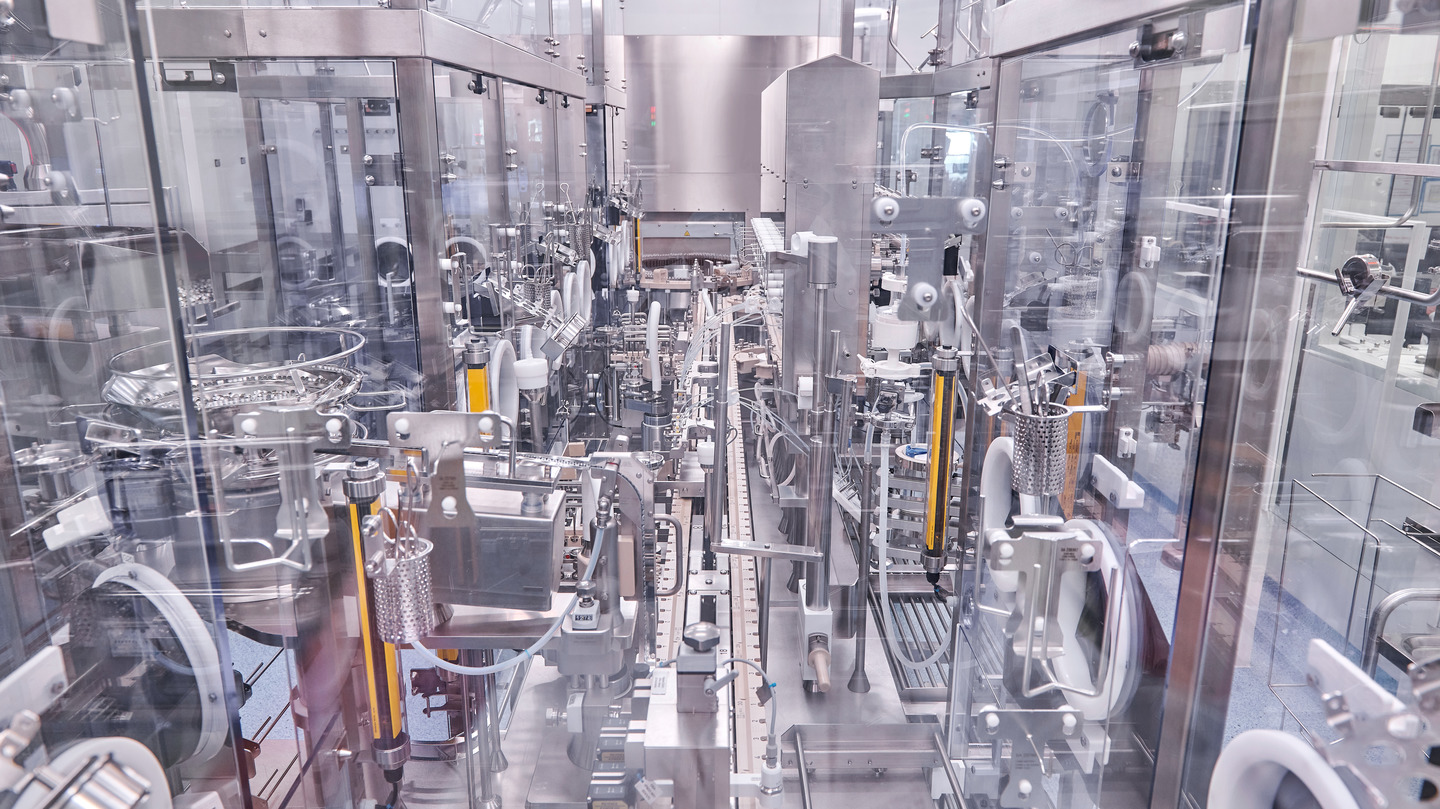
Dr. Melanie Zerulla-Wernitz, Head of Analytical Science Laboratory, and Dr. Alexandra Heussner, Laboratory Manager of Analytical Science Laboratory, Project & Service Analytics Department share how Vetter’s Analytical Science Laboratory is advancing cutting-edge testing capabilities.
At Vetter, high-class analytical services are a cornerstone of our aseptic fill-and-finish capabilities. Our comprehensive offerings provide robust support for the highest possible quality standards in aseptic manufacturing and continuously enhance our services by adopting innovative technologies.
One such innovation is a customized assay for detecting traces of hydrogen peroxide (H2O2) in aseptically filled products.

Why is H2O2 detection essential in sterile production?
Dr. Zerulla-Wernitz: H2O2 is an essential sanitization agent for aseptic manufacturers like Vetter. It is widely used in nebulized or vapor-phase forms (VHP) to disinfect cGMP filling environments such as restricted-access barrier systems (RABS) and isolators.
As a powerful oxidizer, H2O2 is highly effective for sanitization. However, it poses a risk of unintentionally degrading oxidation-sensitive compounds, including valuable pharmaceutical products. After sanitization, residual traces of H2O2 must be reduced to a minimum level to protect our customers’ products from potential damage.
What challenges do analytical laboratories face when monitoring and measuring residual H2O2?
Dr. Heussner: While established methods exist for detecting airborne H2O2 traces, detecting these traces in solutions is more complex and technically demanding.
One challenge is achieving the high analytical sensitivity required to protect our customers’ products, especially biologics that are highly vulnerable to even minute oxidative stress. Effective H2O2 assays must detect trace levels as low as 10 parts per billion (ppb).
Another challenge is the inherent instability of low-concentration H2O2, which decomposes quickly. This requires assays that are both highly sensitive and fast-acting to provide reliable results.
Finally, the test must fit seamlessly into the aseptic filling process. For example, technical runs with sterile Water for Injection (WFI) help determine if additional upstream controls are needed before processing the pharmaceutical product. A best-in-class assay must address these factors.
Why did Vetter develop a customized approach to detecting H2O2?
Dr. Zerulla-Wernitz: Many laboratories use commercially available H2O2 detection kits. While these kits employ similar components to our assay, they have limitations that do not fully meet Vetter’s high-quality standards.
Key factors like sensitivity, robustness, and speed were critical considerations. Commercial assays often struggle to meet these demands consistently.
Security of supply was another factor. As H2O2 detection is critical for Vetter, any disruption to testing resource availability could challenge our quality program. By establishing a customized assay, including interchangeable key components like enzymes, we want additional reliability.
What were your goals in developing the customized H2O2 assay?
Dr. Heussner: We set stringent parameters to ensure the assay met our scientific and operational standards.
Our design incorporated proven components from Amplex Red and Amplex UltraRed assays and we aimed for a consistent detection threshold of 10 ppb, paired with fast, robust performance.
Additionally, the assay was validated in our Analytical Science Laboratory, fully aligned with our quality strategies. This tailored approach delivers sensitivity, speed, accuracy, and precision.
We are proud to have achieved a validated assay that fulfills expectations in all these areas.
What are the key attributes of the customized H2O2 assay?
Dr. Zerulla-Wernitz: Our customized assay delivers several key advantages:
- Sensitivity: It detects H2O2 traces down to a lower limit of quantification (LLOQ) of 6.8 ppb, crucial for protecting sensitive biologic products.
- Efficiency: The assay requires only a 5-minute incubation at room temperature, reducing resource use. From sampling to reporting, the process is completed for one sample in approximately 2 hours.
- Regulatory Compliance: It is fully validated for its intended purpose, adhering to the latest guidelines and pharmacopeial standards.
What’s next for this assay and related innovations?
Dr. Heussner: Currently, the assay is routinely used in cleanroom and isolator qualification processes, such as V-CRT®, and performs robustly with accuracy and precision.
In the future, new drug products, emerging technologies, regulatory updates, or advanced analytical instruments may necessitate adaptations. Analytical procedures undergo a lifecycle, including ongoing performance verification.
We remain dedicated to researching this area, sharing knowledge, and providing scientific support. For more information, check our latest publications [1, 2] or meet us at international conferences throughout the year.
[1] Heussner AH et al., Development and Validation of a Customized Amplex UltraRed Assay for Sensitive Hydrogen Peroxide Detection in Pharmaceutical Water. PDA Journal of Pharmaceutical Science and Technology 78: 548-559, 2024. https://doi:10.5731/pdajpst.2022.012758.
[2] Heussner AH et al., Stability evaluation from hydrogen peroxide spiking studies. European Journal of Pharmaceutical Sciences 203, 106916, 2024. https://doi.org/10.1016/j.ejps.2024.106916

